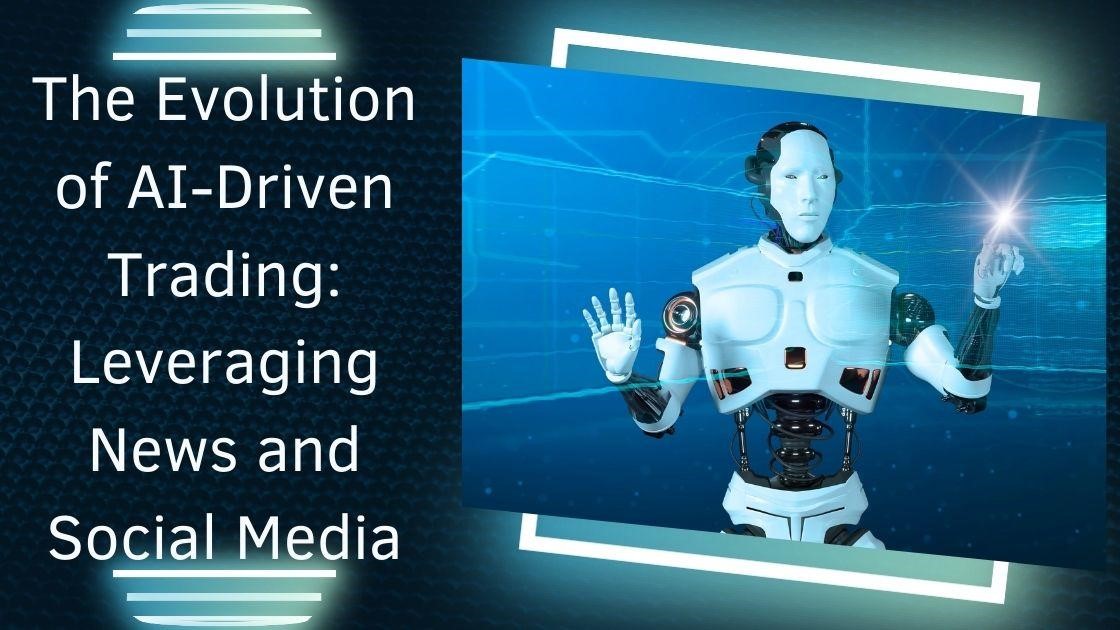The Evolution of AI-Driven Trading: Leveraging News and Social Media
As artificial intelligence (AI) continues to revolutionize industries, one of its most dynamic applications is in financial markets, where AI-driven trading algorithms harness the power of real-time news and social media analysis. In this exploration, Mahesh Jain, a seasoned researcher, provides an in-depth review of how these technologies shape the landscape of modern trading. By examining technical advancements and future directions, Jain presents a comprehensive look at the convergence of news analytics, machine learning, and high-frequency trading.
The Rise of News-Based Trading
The concept of algorithmic trading dates back to the 1970s, but the integration of news analysis into trading strategies has been a more recent development. By the early 2000s, it became evident that market-moving news could be leveraged for trading, but processing unstructured text data in real-time posed significant challenges. Advances in natural language processing (NLP) have since enabled algorithms to efficiently analyze news content, evaluate sentiment, and extract insights with remarkable speed.
Today’s news-based trading algorithms are more sophisticated than ever, employing sentiment analysis to gauge the tone of news articles, named entity recognition to pinpoint companies or events, and topic modeling to identify emerging trends. These technologies empower trading systems to act on relevant information almost instantaneously.
Social Media: A Real-Time Market Influencer
The impact of social media on market movements has surged, with trading algorithms now monitoring platforms like Twitter and Reddit to identify trending topics that may influence investor sentiment. These algorithms track keywords, analyze conversation volumes, and profile influential users to gauge their impact. Real-time analysis is essential for navigating today’s highly interconnected and reactive financial markets. For example, a sudden spike in tweets about a specific stock or event could prompt algorithms to adjust trading strategies accordingly. The ability to harness collective social media sentiment has become a crucial advantage for AI-driven trading systems, setting them apart in the industry.
Technical Components Behind the Scenes
AI-driven trading algorithms are built on a foundation of multiple technical components:
- Data Analysis: Systems collect data from diverse sources, including traditional news outlets and social media, using APIs and web scraping techniques. NLP methods such as tokenization, dependency parsing, and text summarization are used to process and understand unstructured text data.
- Sentiment Analysis and Topic Modeling: These techniques help algorithms assess the market impact of news articles and social media posts. Deep learning models, like BERT and GPT, enable a nuanced understanding of text, capturing context and subtleties that simpler models would miss.
- Integration with Market Data: To provide actionable insights, news and social media data are combined with traditional financial metrics. Machine learning models analyze correlations between sentiment and stock price movements, creating robust predictions.
The execution of trades relies on smart order routing and transaction cost analysis, ensuring decisions are made efficiently and with minimal market impact.
Challenges and Ethical Considerations
AI-driven trading systems, despite their advancements, face significant challenges. Data quality is a major issue, as misinformation from social media can produce flawed trading signals. Models also struggle with backtest overfitting, performing well on historical data but failing in live trading. Additionally, market saturation may occur as more traders adopt similar strategies, diminishing their effectiveness. Ethical concerns include market instability, exemplified by flash crashes, and fairness, as sophisticated algorithms often give large institutions an advantage over individual investors. To mitigate these issues, researchers and policymakers are focusing on developing improved regulatory frameworks and promoting transparency in AI-driven trading practices.
The Future: Quantum Computing and Beyond
Looking ahead, quantum computing promises to revolutionize AI-driven trading. Quantum algorithms could enable faster data processing and more advanced NLP techniques, enhancing the analysis of complex market dynamics. Quantum-enhanced machine learning may yield adaptive strategies for real-time market shifts. Even before full-scale quantum computing arrives, quantum-inspired algorithms and hybrid models will provide incremental advancements.
In conclusion, Mahesh Jain highlights that AI-driven trading innovations are transforming the financial industry, leveraging news, social media, and advanced analytics to revolutionize strategies. As these technologies evolve, he stresses the need to balance innovation with ethical responsibility, ensuring market stability and fairness. The future of AI in finance hinges on this careful balance.

